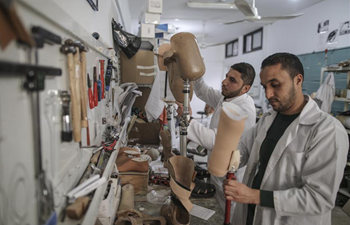GENEVA, April 22 (Xinhua) -- Swiss scientists have developed an early warning system for four most common types of cancer, so that a visible mole will appear on the skin should a tumor develop, according to a press release from Zurich Federal Institute of Technology (ETHZ) on Sunday.
In the research, which has been published in U.S. medical journal Science Translational Medicine, an ETHZ team has developed a prototype implant which can be inserted under the skin. It contains a network of cells which constantly monitor calcium levels in the body. As cancer can cause calcium levels to rise in the body, the implant detects when a threshold is exceeded and triggers the production of melanin, causing a small dark mole to form.
The implant can recognize four most common types of cancer: prostate, lung, colon and breast cancer, at a very early stage. Cancer is the main cause of death alongside cardiovascular disease in industrialized countries. However, many of those affected are only diagnosed after a tumor has developed extensively.
"Early detection increases the chance of survival significantly," said Martin Fussenegger, professor at the Department of Biosystems Science and Engineering at ETHZ in Basel.
If breast cancer is detected early, for example, the chance of recovery is 98 percent. However, if the tumor is diagnosed too late, only one in four women has a good chance of recovery, he added.
The implant is intended primarily for self-monitoring, making it very cost effective. However, the service life of such a device is limited, as encapsulated living cells last for about a year. After that, they must be inactivated and replaced.
So far, the prototype early warning device has been tested on mice and on pig skin, where it functioned reliably, the ETHZ press release said. Tests on humans are still years away.
"Continued development and clinical trials in particular are laborious and expensive, which we as a research group cannot afford," said Professor Fussenegger. He believes it will take another ten years of research and development for a cancer diagnosis implant to be available for sale.

















